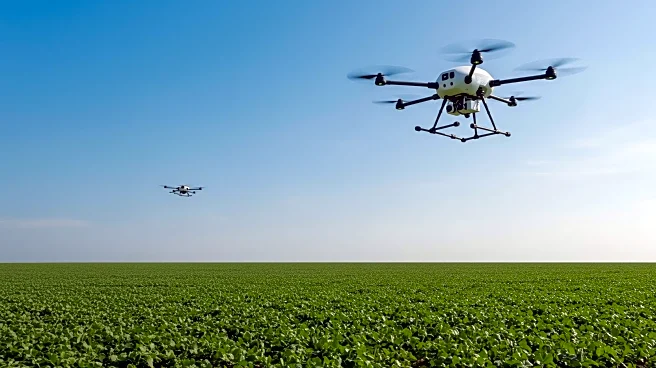What is the story about?
What's Happening?
AI technologies are revolutionizing agriculture by boosting crop yields and enhancing food security. In 2025, AI-powered tools have increased crop yields by up to 20% globally, addressing the challenges posed by climate change and population growth. These technologies integrate AI, IoT, and satellite-based tools to optimize crop production, enhance farmland security, and safeguard food systems. Precision farming, disease prediction, and supply chain management are key areas where AI is making significant impacts, reshaping the approach to food security and agriculture.
Why It's Important?
The integration of AI in agriculture is crucial for addressing the growing demand for food amidst climate change and population growth. By optimizing resource use and enhancing crop resilience, AI technologies contribute to sustainable farming practices and food security. This transformation benefits farmers by maximizing yields, minimizing waste, and enhancing resilience against environmental challenges. The broader impact includes improved supply chain efficiency and reduced post-harvest losses, ensuring stable food supplies globally.
What's Next?
The continued adoption of AI in agriculture is expected to lead to further advancements in precision farming and disease management. Stakeholders, including farmers, governments, and technology companies, are likely to invest in AI-driven solutions to enhance food security. Future developments may focus on integrating AI with blockchain for supply chain transparency and exploring new AI applications in crop breeding and sustainable development.
Beyond the Headlines
The widespread use of AI in agriculture raises ethical and policy considerations, such as data privacy and equitable access to technology. Ensuring that smallholders and developing regions benefit from AI advancements is crucial for global food security. The long-term implications include reshaping agricultural practices and policies, fostering sustainable development, and addressing environmental challenges.
AI Generated Content
Do you find this article useful?












